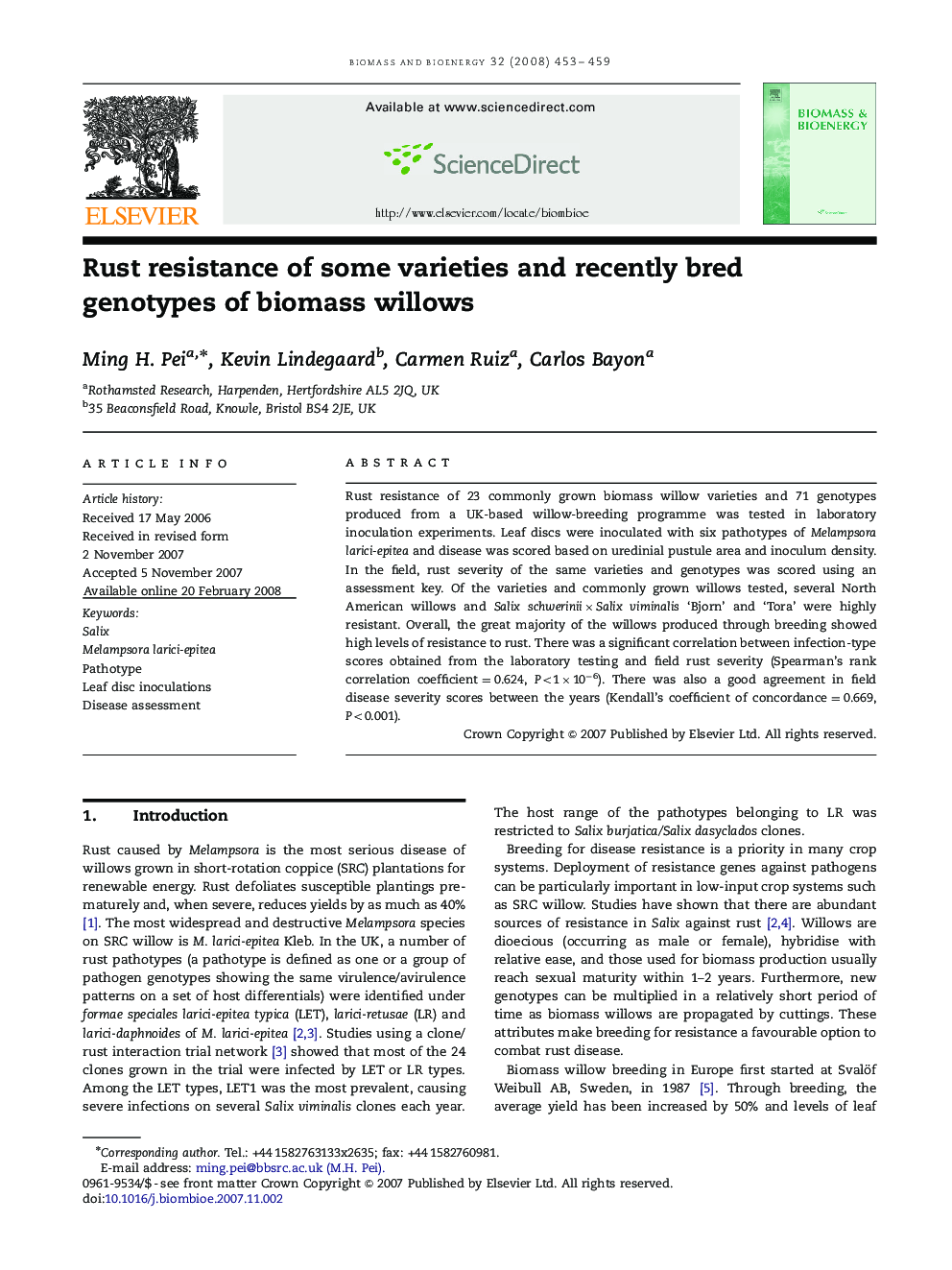| Article ID | Journal | Published Year | Pages | File Type |
|---|---|---|---|---|
| 678621 | Biomass and Bioenergy | 2008 | 7 Pages |
Rust resistance of 23 commonly grown biomass willow varieties and 71 genotypes produced from a UK-based willow-breeding programme was tested in laboratory inoculation experiments. Leaf discs were inoculated with six pathotypes of Melampsora larici-epitea and disease was scored based on uredinial pustule area and inoculum density. In the field, rust severity of the same varieties and genotypes was scored using an assessment key. Of the varieties and commonly grown willows tested, several North American willows and Salix schwerinii×Salix viminalis ‘Bjorn’ and ‘Tora’ were highly resistant. Overall, the great majority of the willows produced through breeding showed high levels of resistance to rust. There was a significant correlation between infection-type scores obtained from the laboratory testing and field rust severity (Spearman's rank correlation coefficient=0.624, P<1×10−6). There was also a good agreement in field disease severity scores between the years (Kendall's coefficient of concordance=0.669, P<0.001).
